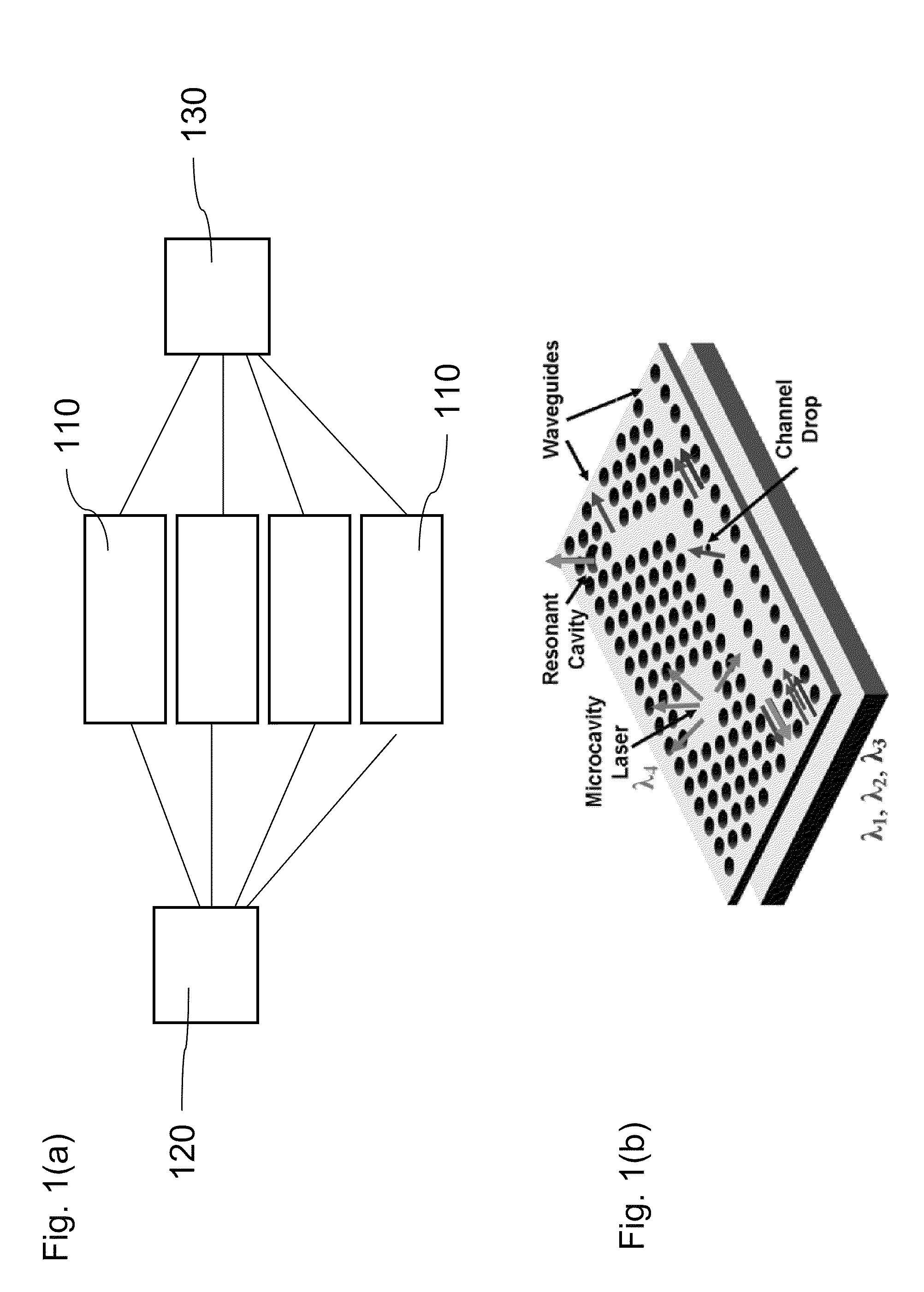Methods, materials and devices for light manipulation with oriented molecular assemblies in micronscale photonic circuit elements with High-Q or slow light
a technology of photonic circuit elements and molecular assemblies, which is applied in the direction of optical elements, instruments, vacuum evaporation coatings, etc., can solve the problems of thermal irreversibility, high fatigue resistance, and high speed of molecular self-assemblies for direct modulation (control) of light propagation in photonic microstructures, and achieve enhanced interaction with single molecules, molecular layers or aggregates.
- Summary
- Abstract
- Description
- Claims
- Application Information
AI Technical Summary
Benefits of technology
Problems solved by technology
Method used
Image
Examples
Embodiment Construction
[0072]All-optical switches and logic gates are needed as components in integrated photonic circuits that control the flow of light at near-infrared (IR) frequencies. The recent drive to optical device miniaturization exemplified by the emergence of photonic bandgap nanostructures suggests molecules as possible functional elements. However, materials with a strong optical response in the near-IR, necessary for direct modulation at small scales, are generally unavailable. This limitation may be overcome by resonant amplification of the otherwise weak optical response through light recirculation in optical (high-Q) cavities or in photonic structures that generate slow light. High-Q cavities and slow light devices can be micro-fabricated. Common photonic architectures are ring resonators or photonic crystals—which also provide a convenient platform to interface with molecular aggregates. Molecules can be crafted on the surface or directly into the optical path of the photonic structure ...
PUM
| Property | Measurement | Unit |
|---|---|---|
| absorption wavelengths | aaaaa | aaaaa |
| absorption wavelengths | aaaaa | aaaaa |
| absorption wavelength | aaaaa | aaaaa |
Abstract
Description
Claims
Application Information
 Login to View More
Login to View More - R&D
- Intellectual Property
- Life Sciences
- Materials
- Tech Scout
- Unparalleled Data Quality
- Higher Quality Content
- 60% Fewer Hallucinations
Browse by: Latest US Patents, China's latest patents, Technical Efficacy Thesaurus, Application Domain, Technology Topic, Popular Technical Reports.
© 2025 PatSnap. All rights reserved.Legal|Privacy policy|Modern Slavery Act Transparency Statement|Sitemap|About US| Contact US: help@patsnap.com



